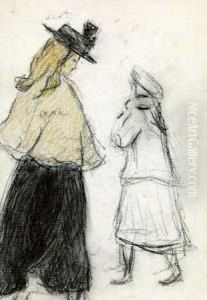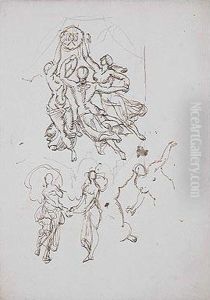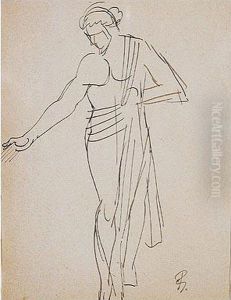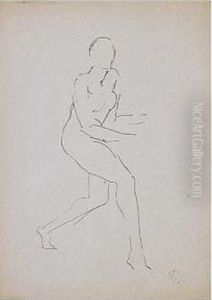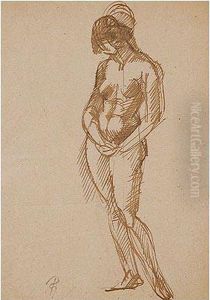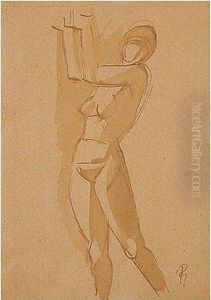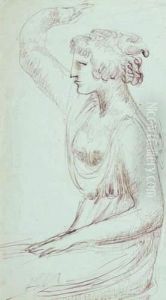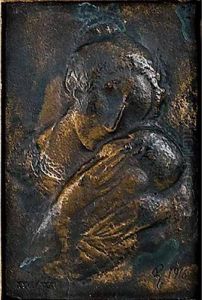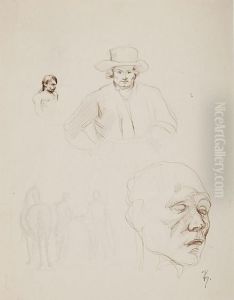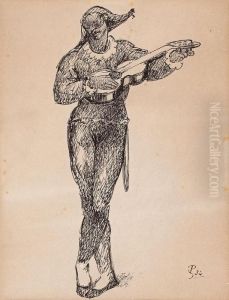Pablo Gargallo Paintings
Pablo Gargallo was a renowned Spanish sculptor and painter, born on January 5, 1881, in Maella, Zaragoza, Spain. He is celebrated for his significant contributions to the development of modern sculpture, particularly for his innovative use of materials and his exploration of the interplay between negative and positive space. Gargallo showed an early interest in art, which led him to study at the School of Fine Arts in Barcelona, where he was influenced by Modernisme, the Catalan version of Art Nouveau.
In the early 20th century, Gargallo moved to Paris, the epicenter of the artistic avant-garde, where he was exposed to and inspired by the burgeoning movements of Cubism and Futurism. This period was crucial for his artistic development; he began experimenting with various materials, including metal, which would become a hallmark of his work. Gargallo's sculptures often featured thin, open forms, creating a dialogue between the solid structure and the space around it. His innovative approach set him apart from his contemporaries and positioned him as a pioneer in the field of modern sculpture.
Throughout his career, Gargallo created both figurative and abstract works, but he is perhaps best known for his metal sculptures, such as 'The Prophet' (1933) and 'Kiki de Montparnasse's Head' (1928). These pieces exemplify his skill in transforming metal sheets into expressive, dynamic forms that capture the essence of his subjects. Despite his focus on metal, Gargallo did not abandon other materials; he also worked with wood, bronze, and stone, demonstrating versatility and a deep understanding of each medium's unique qualities.
Gargallo's work was not only innovative in its form and material but also in its thematic exploration. He often depicted human figures, faces, and mythological subjects, imbued with a sense of vitality and emotion. His ability to convey movement and expression within the constraints of hard materials is a testament to his mastery of the sculptural form.
Sadly, Pablo Gargallo's life was cut short when he died on December 28, 1934, in Reus, Catalonia, Spain, at the age of 53. Despite his relatively brief career, Gargallo's influence on the development of modern sculpture is profound. His work continues to be celebrated for its originality, expressiveness, and the innovative way in which it challenges the viewer's perception of space and form. Today, Gargallo's sculptures can be found in major museums and collections around the world, securing his legacy as one of the early 20th century's most important sculptors.
